Hello, I’m excited to share with you some fascinating insights into the body language of your ferret. As a ferret owner myself, I’ve come to appreciate how crucial it is to understand and interpret their behavior accurately. By observing their body language closely, we can deepen our bond with these adorable creatures and ensure their well-being.
Ferrets are highly expressive animals, and they use their body language to convey a range of emotions and needs. From excitement to curiosity, playfulness to fear, they have various ways of communicating with us. By learning their unique cues, we can respond appropriately and provide them with the care and attention they require.
In this article, we will explore the different aspects of ferret body language based on factual data. We will delve into their joyful and contented behaviors when they are excited or happy, their curious and playful interactions, as well as how they communicate their needs and express fear or anxiety. By the end, you’ll have a better understanding of your ferret’s body language and how it can help you build a stronger bond.
Key Takeaways:
- Observing your ferret’s body language can strengthen the bond between you and your pet.
- Ferrets display excitement and happiness through a raised head, interaction, the “Weasel War Dance,” and vocalizations known as “dooking.”
- Curiosity and playfulness are demonstrated by sniffing, tail swishing, and increased “dooking” sounds.
- Ferrets use various behaviors to initiate play and may resort to nipping if attention is not received.
- By observing your ferret’s location and attention, you can understand their needs and desires.
Excitement and Happiness
When a ferret is happy or excited, it displays unique body language cues that reflect its joyful state. These behaviors not only serve as a means of expression but also provide insight into the ferret’s overall well-being.
One of the most noticeable signs of a happy ferret is its elevated head position. Instead of keeping its head low or level with its body, a contented ferret will hold its head up high, alert and engaged with its surroundings.
Another exciting behavior commonly exhibited by a happy ferret is the “Weasel War Dance.” This playful activity involves energetic hopping, twisting, and spinning movements. It often takes place when the ferret is highly excited or eager to engage in interactive play.
This image captures the essence of an excited ferret engaging in the “Weasel War Dance,” showcasing its happiness and exuberance.
Furthermore, a happy ferret may emit a vocalization known as “dooking.” This high-pitched sound resembles a prolonged chuckle or warbling noise, indicative of the ferret’s elation and contentment.
Whether it’s through the enthusiastic head position, the playful “Weasel War Dance,” or the joyous dooking, these body language cues clearly convey the emotional state of a happy and excited ferret.
Happiness Indicators:
- Head held up high
- Engaging in the “Weasel War Dance”
- Making vocalizations (“dooking”)
Curiosity and Playfulness
A curious ferret’s body language is fascinating to observe. They have unique behaviors that signal their curiosity and playfulness. By understanding these cues, you can better engage with your pet and create enriching experiences for them.
Sniffing and Exploring
When a ferret is curious, you’ll notice them holding their nose close to the ground and sniffing around. This behavior is their way of exploring their environment and gathering information about their surroundings. As they inhale the scents, their excitement may intensify, resulting in the distinctive sound known as “dooking.” The higher the level of curiosity, the louder and quicker the dooking becomes.
Tail Swishing
In addition to sniffing, some ferrets also display a playful behavior called tail swishing. This involves rapid movements of their tail from side to side. The swishing motion often occurs when they are engaged in playful activities, such as chasing toys or interacting with other pets. It’s a visual cue that signifies their excitement and eagerness to have fun.
Here’s a summary of the curious ferret body language:
| Curious Ferret Body Language |
|---|
| Sniffing behavior |
| Tail swishing |
Observing and appreciating your ferret’s curiosity and playfulness can strengthen your bond. Engage them in interactive playtime, provide stimulating toys, and create a safe environment where they can freely explore. By nurturing their inquisitive nature, you’re enhancing their overall well-being and fostering a happy and contented ferret.
Playful Interactions
When it comes to ferret play behavior, these mischievous creatures have their unique ways of letting you know they are in the mood for some fun. Understanding their playful cues is essential for fostering a healthy and enriching environment for your fur buddy.
One common behavior exhibited by playful ferrets is running up to you and then quickly backing away, almost teasing you with a “catch me if you can” attitude. This playful chase game is a clear indication that your furry friend wants your attention and is inviting you to join in the fun.
If running around and backing away doesn’t capture your attention, a playful ferret may resort to ferret nipping. Although it may seem like a bite, it’s important to recognize that ferret nipping during play is not intended to harm you, but rather to initiate interaction. However, it’s crucial to address this behavior positively to avoid reinforcing nipping habits. Ignoring the nipping and redirecting their attention to an appropriate toy or activity can help teach them appropriate play behavior.
“Ferrets have an innate desire to engage in playful interactions. Nipping is their way of communicating their playfulness, and it’s our responsibility to guide them towards appropriate play behavior.”
Creating a dedicated playtime routine and providing interactive toys can help fulfill your ferret’s play needs and channel their energy in a positive way. By actively engaging with your furry friend in play sessions, you not only strengthen your bond but also provide mental stimulation and physical exercise, promoting a healthy and happy ferret.
Tips for Understanding Ferret Play Cues:
- Pay attention to their body language – a raised tail, arched back, and hopping movements indicate excitement and playfulness.
- Offer a range of stimulating toys to keep them entertained and engaged during playtime.
- Use positive reinforcement to encourage appropriate play behavior and discourage nipping.
- Set aside dedicated play sessions every day to fulfill their play needs.
Remember, understanding and catering to your ferret’s play behavior is not only enjoyable for them but also essential for their overall well-being. Playtime is an important part of a ferret’s daily routine, offering mental and physical stimulation, keeping them happy, and strengthening the bond you share.
Communicating Needs
Ferrets have unique ways of communicating their needs and desires. By paying attention to their behaviors, we can effectively interpret what they’re trying to communicate. Two common forms of communication in ferrets are staring behavior and standing near specific objects.
When a ferret stares persistently, it is often a clear indication that they want something. This can be their way of grabbing your attention and conveying their request. They may stare directly into your eyes or at the object they desire. It’s important not to dismiss their stare as merely curiosity. Instead, view it as a form of communication and try to understand what they need.
Another way ferrets communicate their needs is by standing near specific objects. If a ferret is standing by the cupboard where their treats are stored, it’s a strong indication that they want a snack. Similarly, if they are near their cage door, it may suggest that they want to go in or out. Paying attention to these cues and understanding their desires allows us to meet their needs effectively.
Interpreting ferret requests can greatly enhance the bond between you and your furry friend. By recognizing their forms of communication, you can ensure their comfort and happiness. Whether it’s a treat they’re longing for or a desire to explore their surroundings, being attentive to their cues will make them feel understood and cared for.
Common Ferret Requests and Interpreting Behaviors
| Request | Interpreting Behavior |
|---|---|
| Wanting a treat | Staring at the cupboard where treats are stored |
| Wanting to go in/out of cage | Standing near the cage door |
| Seeking attention | Staring at you or pawing at your leg |
| Desiring playtime | Bringing their favorite toy to you |
Fear and Anxiety
When a ferret feels fearful or anxious, it displays various body language signals that indicate its distress. Recognizing these signs is crucial in understanding and addressing your ferret’s needs.
Signs of Ferret Fear
- Cowering down: A fearful ferret will hunch down low to the ground, trying to make itself smaller.
- Sideways glances: The ferret will often look sideways or over its shoulder, constantly assessing its surroundings for potential threats.
- Hissing: Hissing is a vocalization of distress, and a fearful ferret may hiss to express its fear or anxiety.
In addition to these signs, a fearful ferret may exhibit a “fight or flight” response. This can involve seeking refuge or hiding from the perceived threat. It’s important to provide a calm and secure environment to help alleviate their anxiety.
Creating a Calm Environment
To create a sense of security for your ferret:
- Designate a quiet and peaceful area in your home where your ferret can retreat to when feeling anxious.
- Ensure there are hiding spots or cozy bedding where the ferret can feel safe and secure.
- Minimize loud noises and sudden changes in the environment that may startle or scare your ferret.
- Establish a consistent routine and provide regular opportunities for play, exercise, and mental stimulation.
By understanding fearful ferret body language, you can better address their anxiety and create a soothing environment that promotes their well-being. Remember to be patient and supportive as your ferret learns to trust and feel safe in its surroundings.
Conclusion
Understanding ferret body language and interpreting their behavior is essential for building a strong bond with your pet. By observing their body posture, vocalizations, and interactions, you can gain valuable insights into their emotions, needs, and overall well-being.
When you pay close attention to how your ferret communicates, you can provide the appropriate care and response they require. Whether they are expressing excitement and happiness through their playful “Weasel War Dance” or displaying curiosity through sniffing and tail swishing, being attuned to their body language allows you to engage with them effectively.
Strengthening your bond with your ferret involves patience and time. As you learn to interpret and respond to their signals, you will develop a deeper understanding of their unique personality and preferences. This understanding will not only enhance your ferret’s quality of life but also create a meaningful and enriching relationship between you and your pet.
FAQ
How can I interpret my ferret’s body language?
You can interpret your ferret’s body language by observing their behavior, including their posture, movements, and vocalizations. By paying attention to these cues, you can understand their emotions and needs.
What does it mean when my ferret holds its head up high and interacts eagerly?
When a ferret holds its head up high and eagerly interacts, it usually indicates happiness and excitement. This behavior is a sign of a joyful and contented ferret.
What is the “Weasel War Dance” in ferrets?
The “Weasel War Dance” is a behavior in ferrets where they hop around in excitement or engage in silly antics. This dance is often accompanied by a happy and excited vocalization called “dooking.”
How can I tell if my ferret is curious or playful?
A curious ferret will hold its nose close to the ground, sniff around, and may emit a loud and fast “dooking” sound. Some ferrets also swish their tails rapidly when they are curious or playful. These behaviors indicate their interest in exploring and interacting with their surroundings.
How do ferrets communicate their play requests?
Ferrets communicate their play requests by running up to you and backing away in a “catch me if you can” manner. If these attempts fail, they may resort to nipping at your shoes or ankles. It’s important to address their play requests positively and avoid reinforcing nipping behavior.
How can I understand what my ferret wants?
Ferrets communicate their needs by staring persistently or standing near specific objects. By observing their location and attention, you can determine what they want. Paying attention to these cues allows you to effectively meet their needs.
What are the signs of fear and anxiety in ferrets?
When a ferret feels fearful or anxious, it may cower down, look sideways or over its shoulder, and hiss as a vocalization of distress. They may also exhibit a “fight or flight” response, seeking refuge or hiding from the perceived threat.
How can I help alleviate my ferret’s anxiety?
Recognizing the signs of fear and anxiety in your ferret is the first step. Providing a calm and secure environment can help alleviate their anxiety. Creating a safe space and offering reassurance can help them feel more at ease.

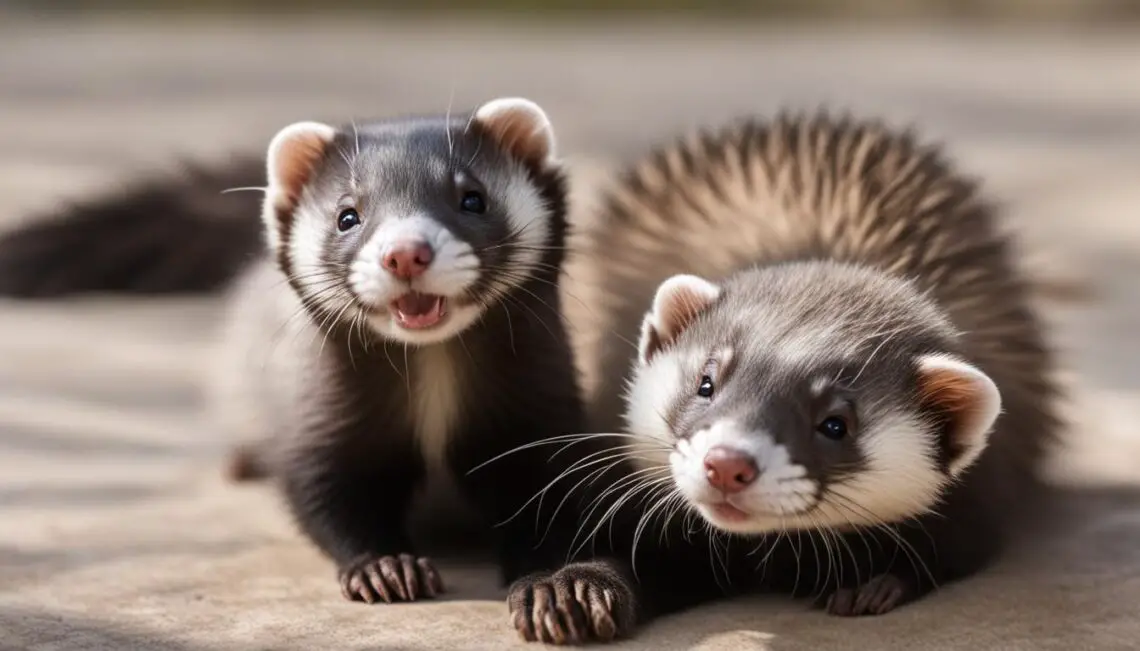
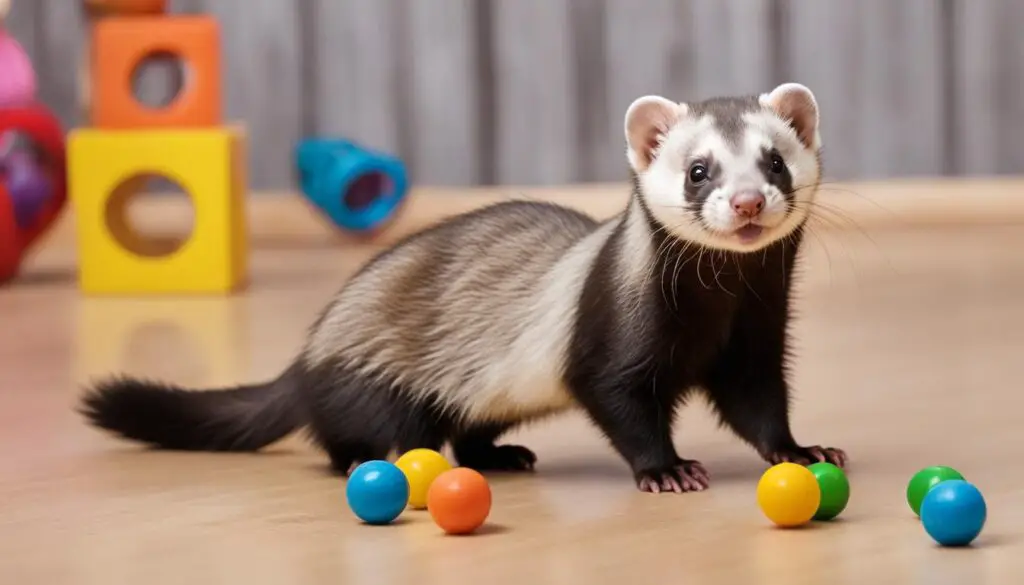

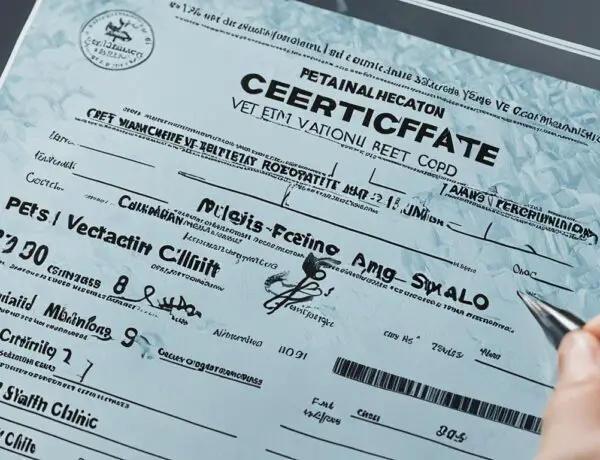
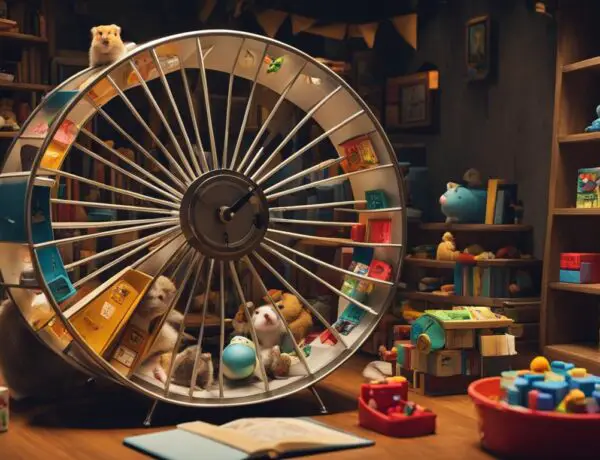
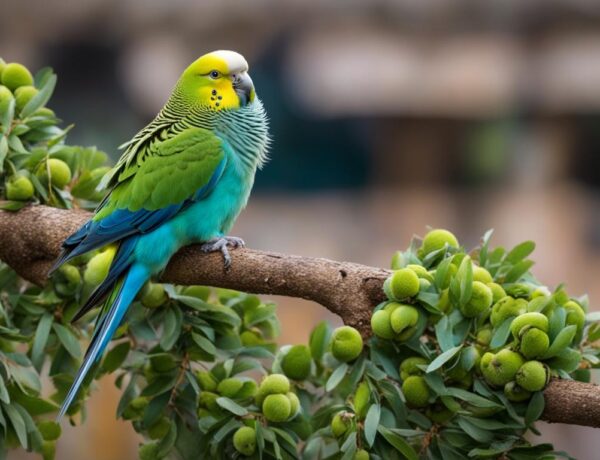
No Comments